Istanbul Cities, Food & Wine
Smoke, spice and the city: A culinary journey through Istanbul
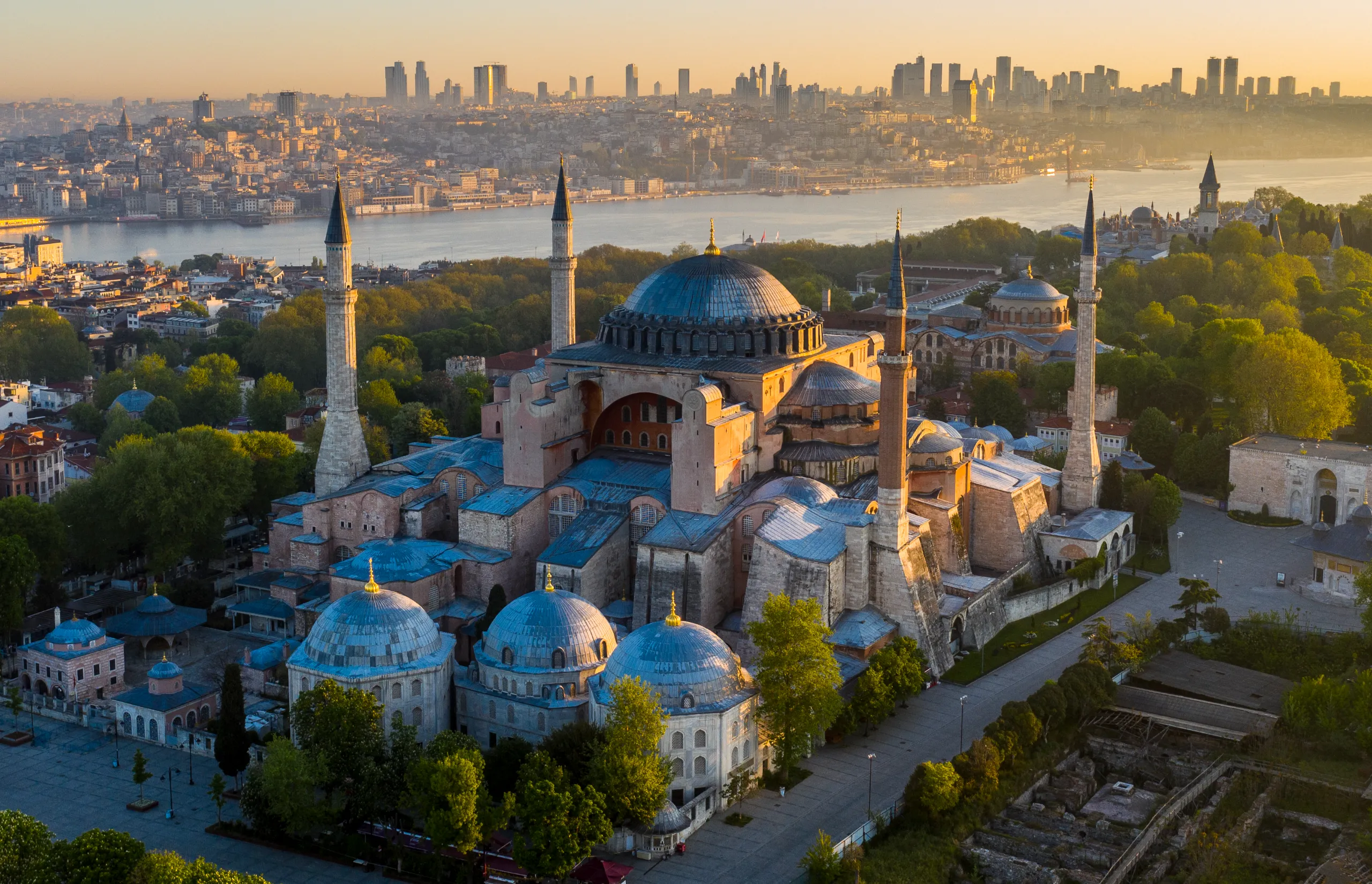
Istanbul | Ayasofya Mosque
From sizzling street food to gilded dining rooms, Turkey’s culinary capital bridges continents and cuisines, serving up a feast of flavour, culture and timeless appeal
I’ve never seen so many walnuts. The long table has vast round trays covered in mounds of them, but it’s just one stall of dozens in a neighbourhood food market that shows how impeccable produce defines Turkish cuisine.
There are red buckets where perfectly peeled artichoke hearts bob in water and tables groaning under hundreds of ebony eggplants. The shouts of market vendors are joined by the cries of the simit salesman, advertising his still warm sesame-flecked rings of bread that he serves from his rickety cart. Other stands sell homemade swirls of pastry stuffed with spinach, herbs and salty cheese, to be consumed with a glass of sweet, scalding-hot Turkish tea – both mine for barely a dollar.
The street market I stumbled upon in Kadiköy, on the Asian side of the Bosphorus – which famously bisects Istanbul – is the perfect window to the dazzling food culture of this megacity of 16 million. Despite ongoing tensions in the wider region, Turkey welcomed a record 55 million visitors in 2024, making it the world’s fifth most visited country, with many drawn by the unmistakable aromas of brilliant local eating at decidedly wallet-friendly prices.
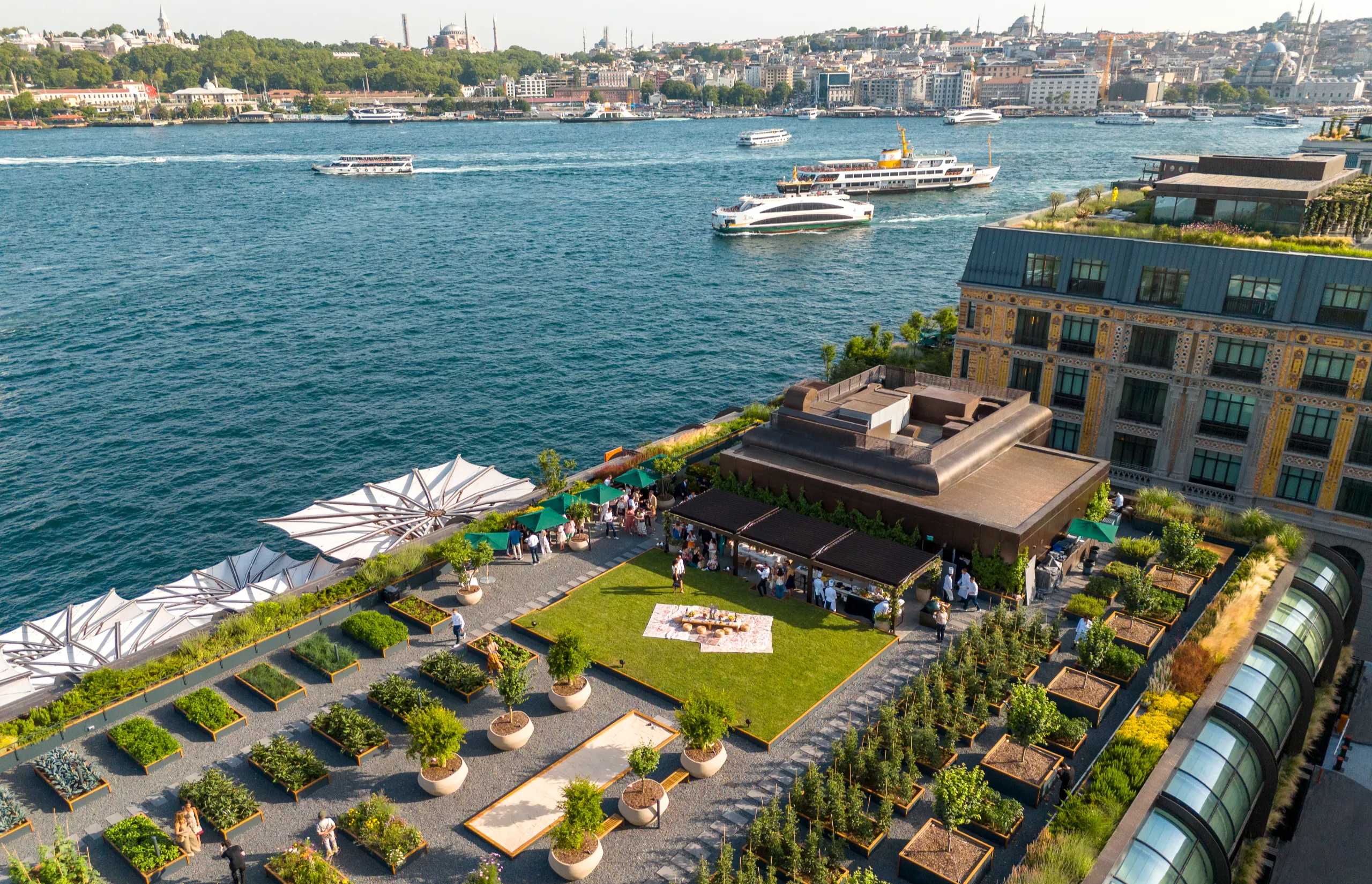
Savouring street fare
Sunlight reflects off the steel suspensions of the mighty Bosphorus Bridge, traversing the iconic waterway that separates Europe and Asia. It leads me to another Istanbul street-food favourite, the humble baked potato which is served up in the shadow of an exquisite 19th-century mosque in the Ortaköy district.
Known as kumpir in Turkish, these enormous baked spuds are generously slathered in butter before diners select from dozens of toppings displayed in chilled counters that entice the crowds passing by. Some stallholders sculpt large slabs of butter into cute animal shapes, but whatever you choose to top your kumpir with, a satisfying alfresco meal is guaranteed for around four dollars, best enjoyed on a bench with a side order of people-watching.
Then, after hours spent navigating the city streets, there’s no better way to recharge than by popping into one of Istanbul’s famed emporiums of sweets. Şekeci Cafér Erol has been in business since 1807, and stepping inside one of the establishment’s eight Istanbul branches feels like winning Willy Wonka’s golden ticket. There are walls and counters filled with sherbets, halva, marzipans, milk desserts, fresh fruit jellies and sugared candies called akide made with honey.
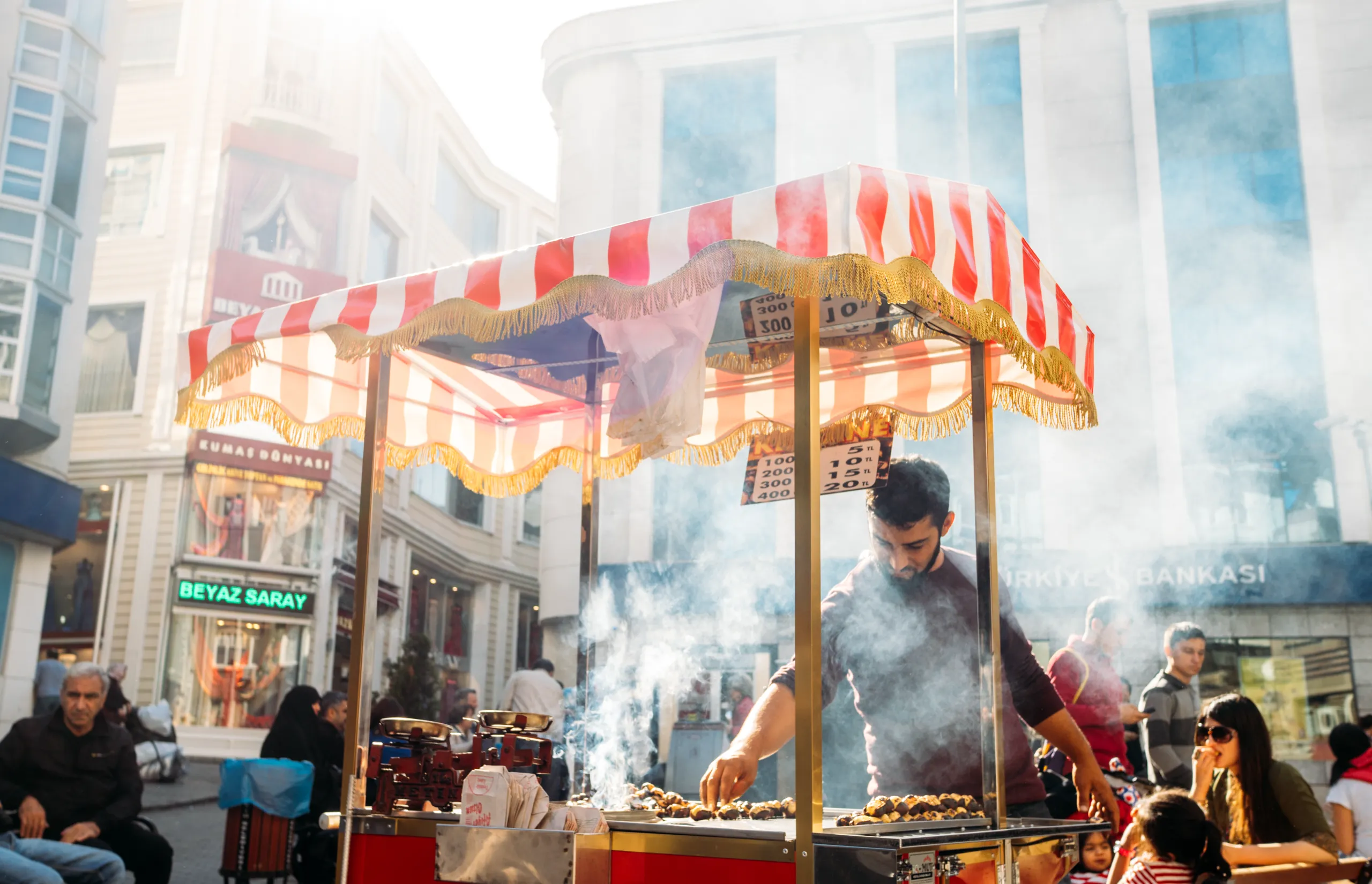
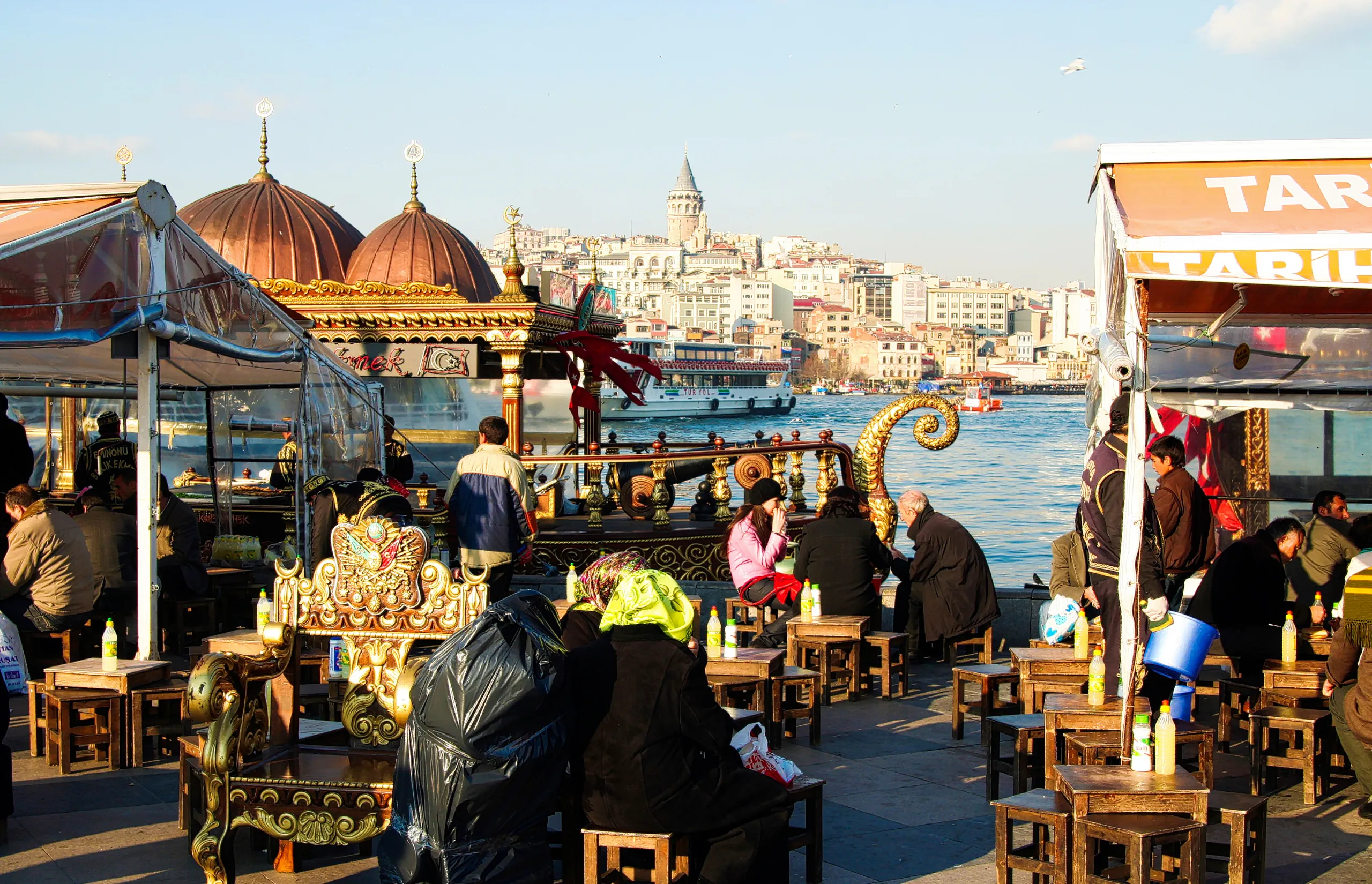
The biggest draw, however, is invariably the 30 kinds of lokum – Turkish delight. Whether crafted with rosewater, lemon, saffron, pistachios, dates or more of those ubiquitous walnuts, the lokum is cooked in small batches in special cauldrons to ensure that the heat is spread evenly, making for the critically consistent texture.
For addictively sticky and decidedly decadent baklava, few spots can match Karaköy Güllüoğlu. Another venerable institution, proudly serving since 1843, the current shop’s sweet fragrance and eye-catching window display both pull you in from the street. I sample everything I can and shop shamelessly – it doesn’t get more authentic. Just don’t make the mistake of buying baklava in the Grand Bazaar; the price is inflated and the quality, in my experience, nowhere near what it should be.
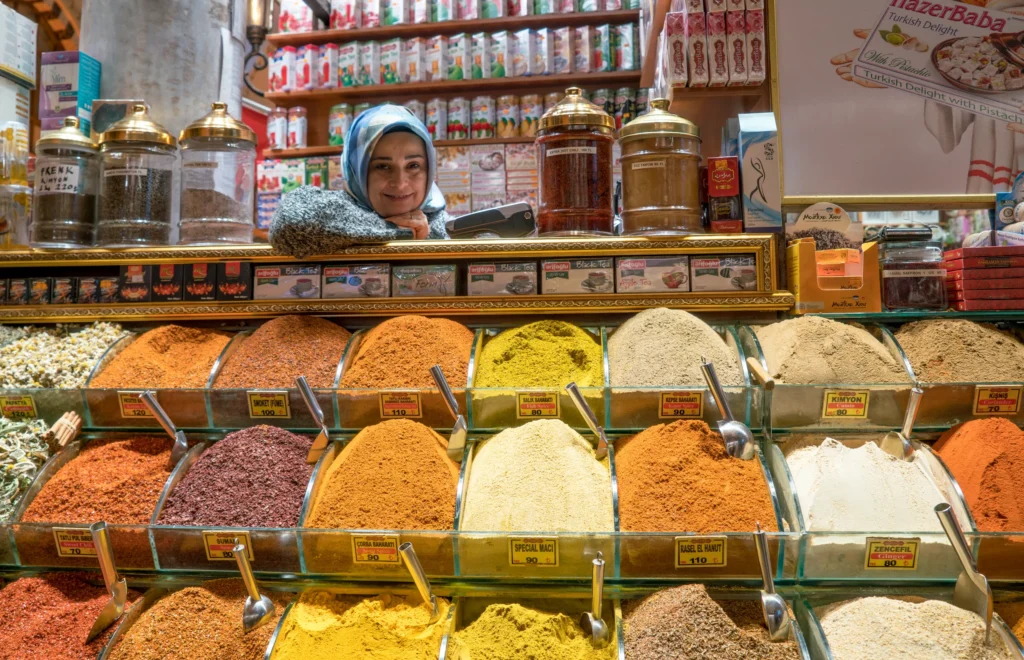
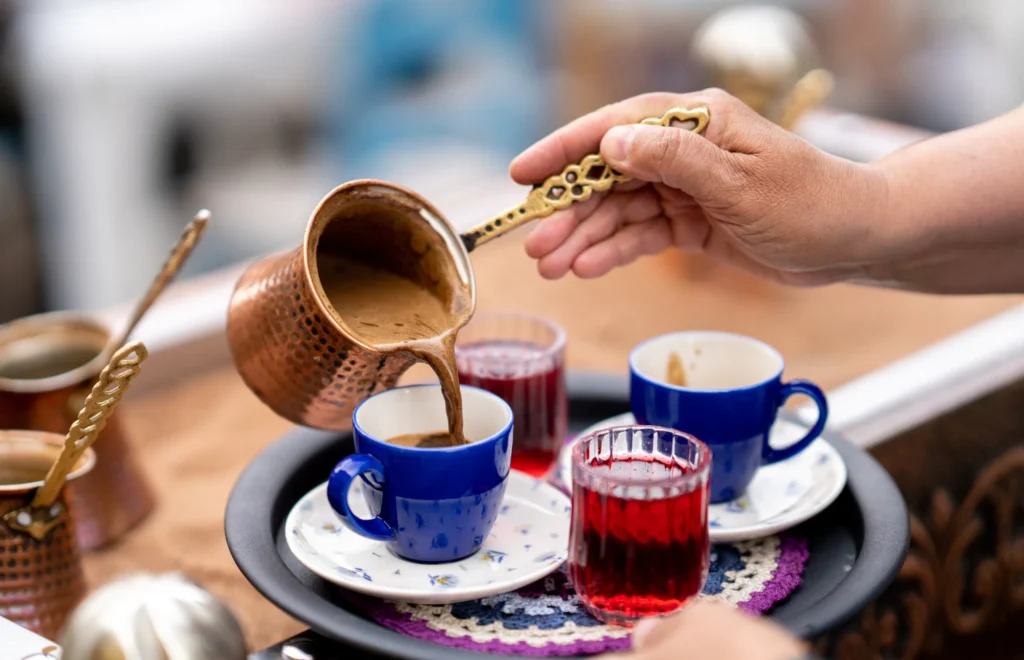
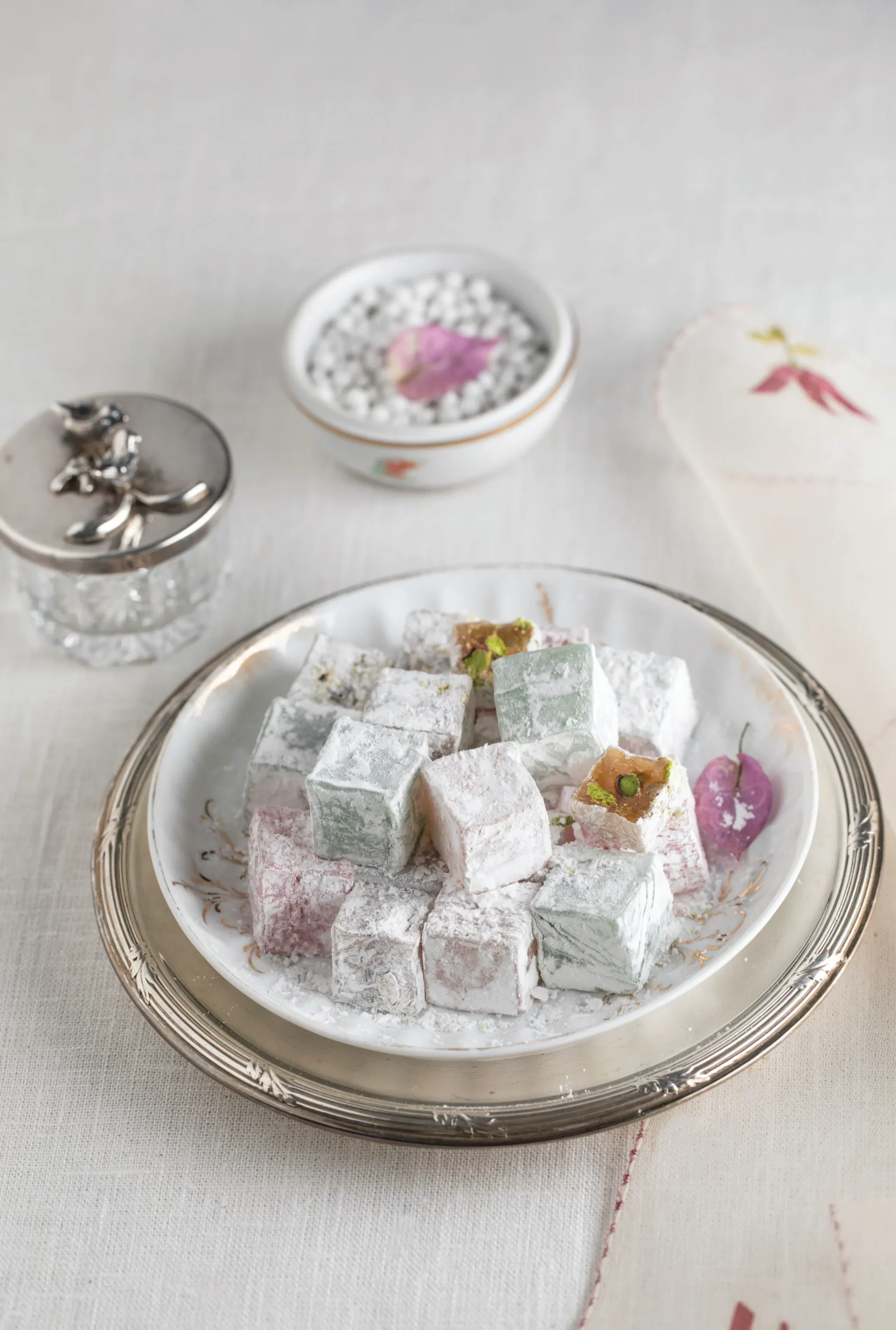
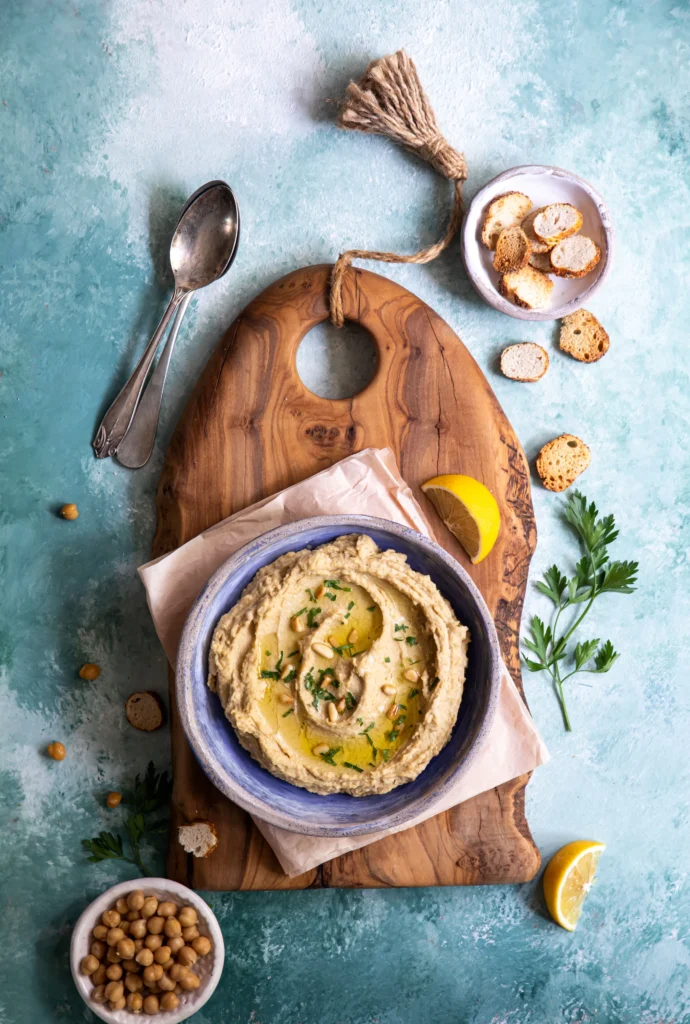
The dining dilemma
The only challenge in more traditional dining comes in choosing from tens of thousands of places to eat. From a dizzying range of world-class kebabs, Adana Ocakbaşi is a standout thanks to its delicious, generous meze, but most of all the moreish skewers of lamb, beef and chicken.
Slow-roasting food over charcoal ensures the tightly packed tables are invariably enveloped in smoke – but once the flatbreads arrive, no one minds. They’ve soaked up the rich juices of the roasted meat before being layered with blistered peppers and tomatoes, sumac-dusted onions, and fresh parsley atop caramelised, charred meat – simply exceptional eating.
Another option well away from the usual tourist trails – but easily reachable on Istanbul’s excellent tram system – sits Buuzecedi, an always-busy hole-in-the-wall loved by Syrian expats and refugees. Istanbul has long been at a geographical crossroads, receptive to visitors and dishes from all over, and Syria is no exception. The falafels are a must-order. Made while you wait and fried until golden, they arrive crisp and piping hot – perfect for dragging through a richly smoky baba ghanoush or pairing with the sharp, acidic crunch of house-made pickles.
The falafels are a must-order. Made while you wait and fried until golden, they arrive crisp and piping hot – perfect for dragging through a richly smoky baba ghanoush or pairing with the sharp, acidic crunch of house-made pickles.
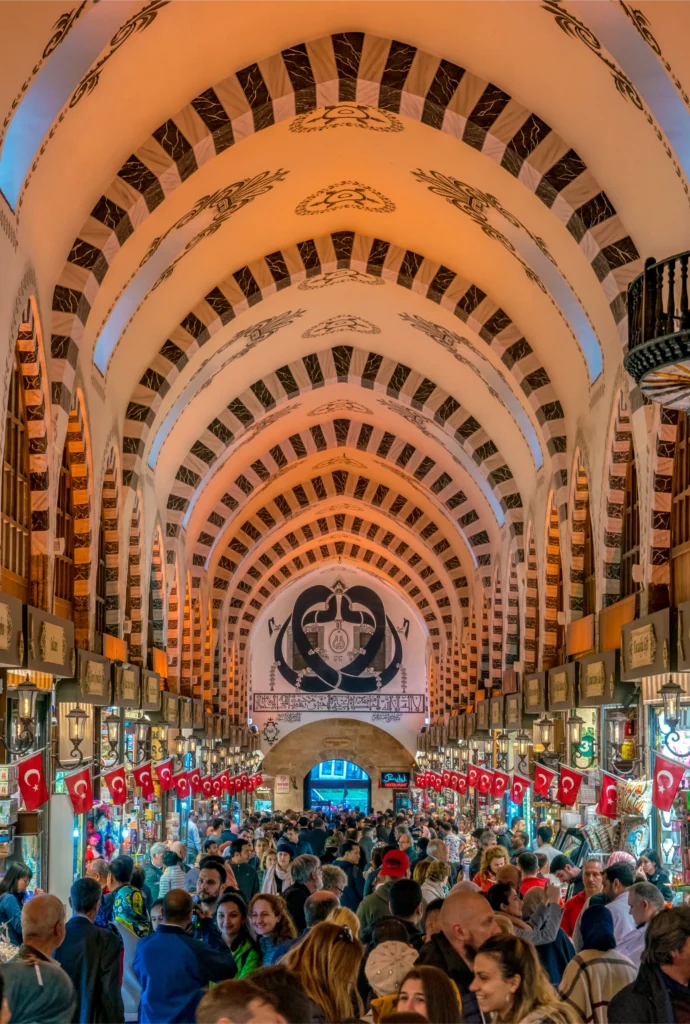
Worthy of Michelin
Turkey welcomed inspectors from the Michelin Guide for the first time in 2022, and in doing so sealed Fatih Tutak’s reputation as the country’s most acclaimed fine-dining chef. His eponymous two-starred TURK Fatih Tutak is a must-visit, but for atmosphere and stellar views I prefer Tutak’s brilliant neo-Turkish dishes at Gallada. Set amid the glorious surroundings of The Peninsula Istanbul, the dining room takes diners on a culinary journey along the historic Silk Road, albeit with Turkey’s largest city as its soul.
Here, gazing out toward the serene Hagia Sophia Mosque, I slather wood-fired potato pide – a flatbread – in smoked bone-marrow butter. Next, a delectable dish of tuna belly with mustard ice cream topped with a quenelle of Oscietra caviar demonstrates exceptional finesse with seafood. Tutak worked in Asia for years so his manti dumplings are as authentic as they come, while a bowl of wok-fried blue lobster with laghman noodles from China’s Uyghur region leaves us speechless – in the best possible way. As, indeed, does Istanbul as a whole.
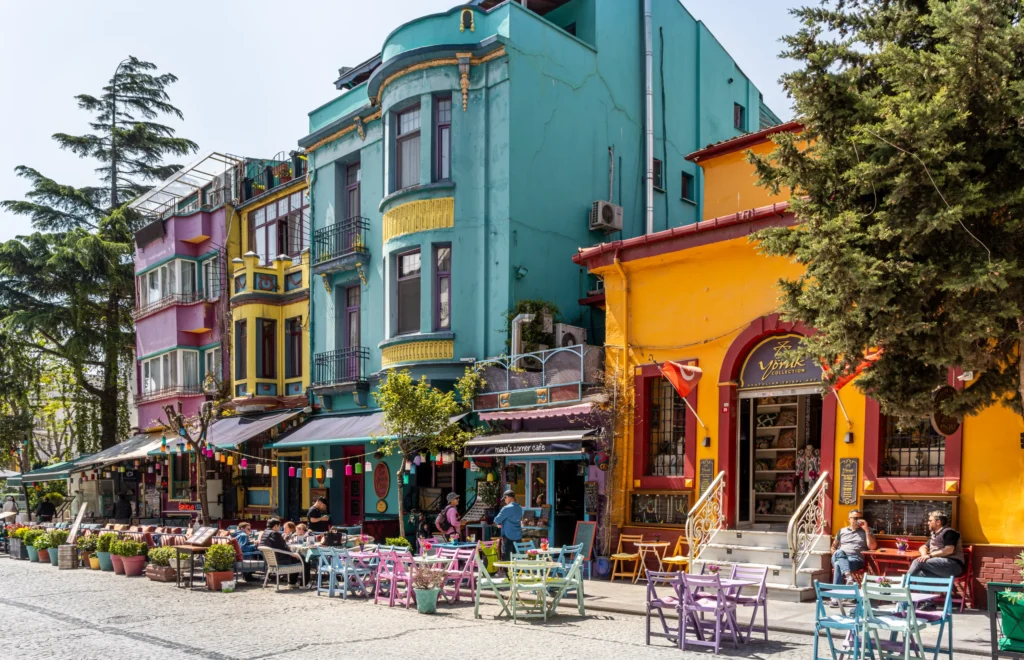
Latest Articles
Don't miss the latest from Luxury Travel
